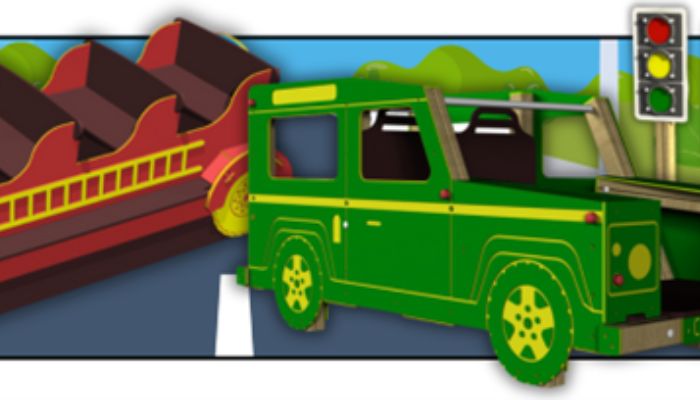We chat to outdoor play expert Claire from Creative Play, who shares how imaginative play can support early years development…
Picking a training provider: A key decision for nurseries
Karen Derbyshire, head of Sector at Realise, shares her thoughts on why implementing the right apprenticeship programme is vital to the success of any early years setting

Management teams at nurseries and other early years settings will be no strangers to making important decisions for their services and children on a daily basis.
There is no doubt in my mind, however, that one of the most crucial choices to be made for any early years setting is selecting the right training programme and provider.
Very few early years settings will have a full internal training or apprenticeship offering so virtually all will turn, to some extent, to an external independent provider to train and upskill their staff.
The importance of apprenticeships and other methods of training can’t be overestimated. Staff retention and regular career development opportunities can literally make or break the success of any early years setting.
A comprehensive and well-considered apprenticeship programme can be invaluable for any business but particularly for those associated with early years education.
As well as the financial advantages, through either government support schemes or the Apprenticeship Levy, upskilling staff not only increases the chance of employees remaining in the industry but also increases the chances of early years settings expanding by meeting the criteria of the Early Years Foundation Stage Statutory Framework, which outlines the required percentage of qualified staff required per child.
Not only this, but staff retention also leads to improved outcomes for children as well as aligning to Ofsted requirements and positively impacting Leadership and Management grade at inspection.
So, what should a nursery look for when appointing an apprenticeship training provider? Here are my top tips.
Coverage and consistency
When we first engage with early years settings, we find many have previous arrangements with multiple training providers.
There are many advantages to consolidating training requirements to form exclusive relationships with a preferred provider.
It should ensure consistency of training delivery, visibility of reporting and standards amongst the workforce which, in turn, will ensure the children attending the nursery will receive the best possible care and education.
The training provider of choice should ideally also offer a wide breadth of qualifications to ensure all of a settings’ apprenticeship training requirements can comfortably sit under one roof.
For instance, while many providers will offer the Level Two Early Years Practitioner Apprenticeship, the recently launched Level Five Early Years Lead Practitioner Apprenticeship will be less common amongst providers – but just as integral for you as a nursery.
Geography
During the pandemic, widespread use of online training delivery was implemented across the early years sector.
The hastily imposed lockdown meant the transition was rapid – here at Realise we shifted to remote delivery almost overnight – and required great flexibility from the learner, provider and employer.
Across the industry, the switch to online learning was surprisingly successful and we were proud of how more than 95 per cent of Realise learners continued on their path to achieving their apprenticeships and other qualifications.
However, despite that success, I remain firmly of the belief that there is no substitute for in-person delivery and having trainers visit the nursery to aid training in the workplace environment.
With that in mind, geography should remain a key factor in selecting a training provider. It would be counter-productive for a nursery to select a provider with Trainer Assessors based at the other end of the country, despite the popularity of Zoom.
Case loads
One of the most common early questions we receive from nurseries is what the case load of our trainers would be should they embark on a training partnership with Realise.
A trainer’s case load is the number of learners they have under their guidance and is a key metric for employers and providers alike.
The question is entirely understandable – too few learners and alarm bells will be ringing over the quality of the training provision. Too many learners and there would be concerns that some individuals could be neglected.
For me, the ideal case load for a trainer is around 35 learners, providing a healthy balance of quality and quantity.
Be bespoke
At Realise, our ethos is to adopt a right learner, right programme approach. It is at the heart of our entire business.
The focus is very much on delivering training initiatives which constantly evolve to meet the current needs of both learners and employers but which are targeted at the progression, experience and calibre of the individual.
Individualising programmes is crucial and nurseries should be encouraging their provider to adopt a flexible and agile approach. The results of a learner’s initial assessment should be used to determine the suitability and level of apprenticeship programme they undertake.
To that end, it’s always worth asking providers what added value they are able to provide. For instance, at Realise we have an exclusive new partnership with NoodleNow which offers practitioners access to an additional 90 courses to further increase their skills and knowledge.
This extra offering, along with our extensive programme of webinars with industry experts, can often be crucial in helping learners and employers alike to enhance their skillset.
For more information, visit the Realise website on realisetraining.com or e-mail [email protected]
Latest Features
The roll-out of new innovations doesn't always go to plan. Ben Case, education advisor at childhood education platform Tapestry, sets…
We discover how RafaKidz Medmenham transformed its outdoor space




